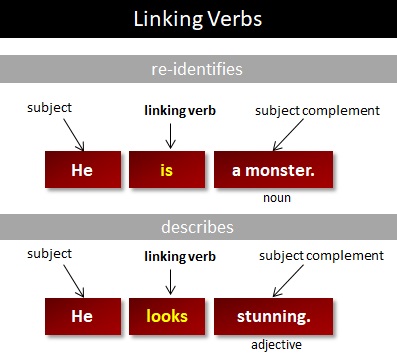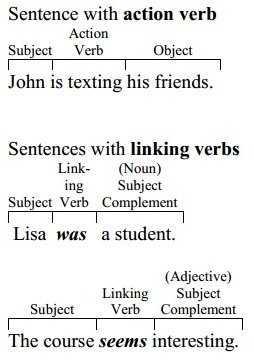Linking verbs is the verbs of incomplete predication; it merely announces that the real predicate follows. The important word in the complement is usually an adjective (The girl is pretty), or a noun (She is a pretty girl). The -ly adverbs of manner (quickly, angrily) are not used with linking verbs.
These three verbs are always linking verbs in English:
| Be | He is tall |
| Seem | You seem sad |
| Become | He became thin |
These verbs can be used as linking verbs, but sometimes they’re normal verbs. Here are some examples of them being used as linking verbs:
| Act | He acted happy, but actually he was really sad |
| Appear | She appeared cold, so we took her inside |
| Feel | I feel terrible today! |
| Get | It’s getting warm. The spring is coming! |
| Go | The food went bad, because I forgot to put it in the fridge |
| Grow | She grew tired |
| Look | You look beautiful today |
| Prove | He thought he was right, but he was proved wrong |
| Remain | He remained calm. It was only a spider |
| Smell | The meal smelled delicious |
| Sound | The band sounded excellent |
| Stay | He stayed curious all his life |
| Taste | The milk tasted horrible |
| Turn | The weather turned bad just as we were leaving |
Note: Linking verbs are not the same as stative verbs. Some linking verbs are stative, but some are not.
- I’m getting old (a linking verb but not a stative verb)
- The soup tastes good (a linking verb and a stative verb)
- I know Julie (stative verb but not a linking verb).
Linking verbs do not show action. They connect the subject of the verb to more information about the subject.

